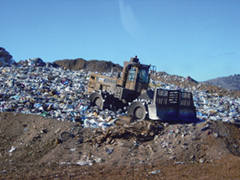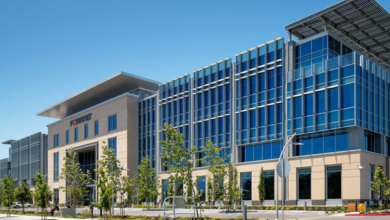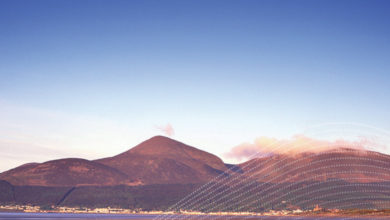Future waste management
 Generating energy from waste through MBT and advanced thermal technologies is the future trend in local waste technology.|
Generating energy from waste through MBT and advanced thermal technologies is the future trend in local waste technology.|
The Northern Ireland Waste Management Strategy 2006-2020 is focused on increasing recycling and encourages plans for energy from waste facilities such as anaerobic digestion, composting, mechanical biological treatment (MBT) and thermal treatment. The Republic’s new waste policy ‘A Resource Opportunity’ (published in July 2012) concentrates on waste prevention and moving away from landfill. It proposes using food waste to produce electricity through anaerobic digestion and building energy from waste facilities such as anaerobic digestion and MBT.
Meanwhile, energy recovery through incineration is currently high on the waste agenda in England and Wales. Waste incineration is not popular in Northern Ireland. In 2009 Belfast City Council voted against plans for a waste incinerator on the North Foreshore. A decision is yet to be made on a proposed poultry litter incinerator in Glenavy, which has faced local opposition.
Environment Minister Alex Attwood has said that he will judge any incineration proposals against the waste hierarchy. In the run-up to the reorganising of local government, he wants to see how councils can be pushed to “up their game on recycling, reusing and maximising opportunities that could mitigate the need for incineration.” He added that incineration “is not merely a matter of burning waste,” and energy from waste could “make the incinerator option more attractive.”
Despite local opposition in County Meath, a waste-to-energy incinerator became operational in 2011.
Northern Ireland’s three waste management groups were tasked in 2000 to develop waste management systems that meet the region’s needs and contributes to its economic and sustainable development (see pages 94-95.) MBT and advanced thermal technologies i.e. gasification and prolysis are under consideration in the province.
MBT is a means of diverting municipal solid waste (i.e. household and commercial) from landfill. It involves the waste being prepared e.g. shredded, passed through a rotating drum (to break down and reduce the size of waste) and separated e.g. manually, magnetically or by using a trommel screen.
The biological processes of MBT includes aerobic decomposition or anaerobic digestion, or a combination of the two. If anaerobic digestion is used, biogas is often produced which can then be used as a source of electricity or heat. MBT is also used to produce a soil conditioner or refuse derived fuel (RDF). This fuel can be used in cement kilns or thermal combustion power plants and is generally made up from plastics and biodegradable organic waste.
Like incineration, gasification and prolysis use high temperatures (i.e. above 750 degrees C) to break down waste but they use less oxygen. Carbon-based waste such as paper, petroleum-based wastes like plastic, and organic materials such as food scraps are broken down to create gas, solid and liquid residues.
The pyrolysis process thermally degrades waste in the absence of oxygen. Gasification exposes materials to oxygen, but not enough to allow combustion to occur. The main product of gasification and pyrolysis is syngas, which is 85 per cent composed of carbon monoxide and hydrogen, with smaller quantities of nitrogen, methane and other hydrocarbon gases. Syngas can then be used as a fuel to generate electricity or steam.
Northern Ireland’s 2006 strategy stated that to meet EU targets for the diversion of waste from landfill, “we will need a network of new waste disposal and treatment facilities.” It adds that “energy from waste will be a necessary component of the mix of technologies required, particularly in light of the urgent need to develop energy from renewable sources.”





